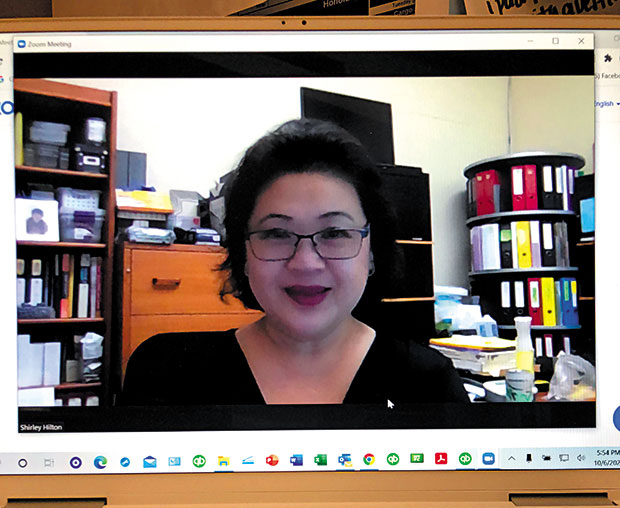This is the fifth in a series of 12 articles that feature the valuable information usually disseminated at Kahala Pacific Floors’ monthly Great Flooring 101 seminars. Due to suspension of its very popular seminars due to COVID-19, company president Shirley Pai Hilton (pictured at right) has developed a new hourlong webinar version of Great Flooring 101 and has also agreed to feature the information right here with us.
Thus far, we have talked about forms of wood flooring in today’s market, characteristics of wood, and facts on bamboo and laminate flooring. This week, we will discuss what is probably the hottest floor in the market right now: luxury vinyl.
Most of us are probably familiar with sheet vinyl flooring. Very popular as a beautiful and practical flooring covering for many years, sheet vinyl was low in cost and very good for moist areas of the home. While millions of square feet were installed over the last 40-50 years, it was difficult to repair cuts or tears, and surface prep was also costly. The subfloor had to be practically perfect for the product to go down smooth and flawless.
About 10 years ago, vinyl was reborn as LVT, or luxury vinyl tiles. This basically referred to vinyl flooring that came in individual pieces, just the way wood planks or tile squares do. The installed product looks more realistic when it goes down in individual pieces, and you could also make repairs by pulling up and replacing the one damaged piece.
There has been a long evolution in the last decade, but we currently have what is called WPC and SPC in luxury vinyl.
These acronyms refer to the core material in the particular products. Both consist of a composite core sandwiched between layers of PVC sheeting, topped off with a photographic image of wood or stone, followed by a clear laminating film on top of that, and finally backed with foam underlayment.
The only difference is what the core is made of. WPC, or wood polymer composite, has a core made with wood pulp, plastic components and a foaming agent for bulk. SPC, on the other hand, is stone polymer composite and consists of stone powder, plastic components and stabilizers.
Both forms are very durable, practical and waterproof! However, more and more, manufacturers are moving toward SPC due to even better surface strength against dents and dings.
Want to learn more and get a special discount on your flooring? Please register for one of our upcoming Great Flooring 101 webinars happening at 10 a.m. Saturday, Dec. 12, or 7 p.m. Thursday, Dec. 17. Registration is required, so sign up by calling 847-7711 or emailing sales@piiwood.com. See you online!
KAHALA PACIFIC FLOORS
CONTACT 847-7711
See more articles from: Kahala Floors

